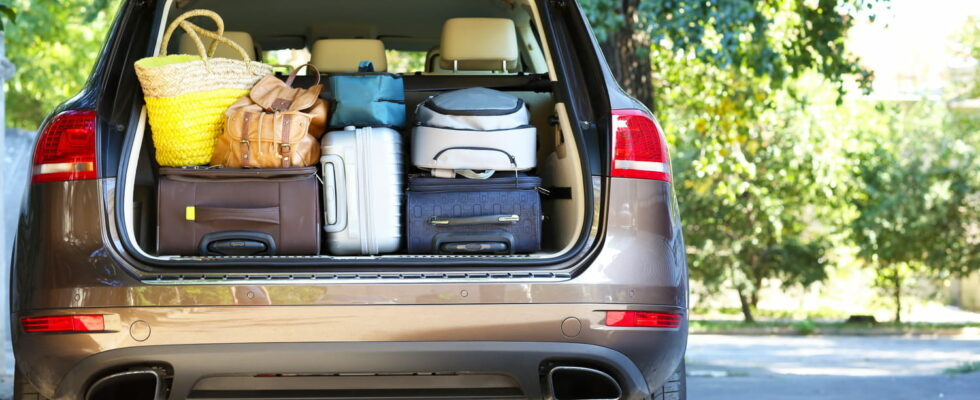Holidays, moving… Our car is very useful when we have to move a lot of things. But we must be careful not to exceed the maximum authorized weight: it is dangerous (and it can be expensive).
Many people use their personal vehicle to transport their belongings when moving or going on holiday: between suitcases for the family, equipment that will be needed on site (tent, bikes, etc.), but also the baby stroller, the travel cot… The trunk often ends up overflowing. But what we tend to forget is that the maximum weight that cars can carry is regulated. It is now called the “maximum permissible mass” (MMA), but the old expression, “total authorized weight” (PTAC), is still common. This refers to the maximum weight that a vehicle can carry.
Knowing it is however simple, since it is indicated on the registration document, in section F2. The figure indicates the authorized GVW for a vehicle, but, to know how much you can transport, you must also look at what is written in section G1. This figure corresponds to the unladen weight. In short, it represents the weight of the car, that of the fuel, of the various other liquids it contains, of the spare wheel, and even takes into account the weight of a driver established at 75 kg. So, to know how many kilos your car can transport, you must subtract the second information from the first. For example, in the case of a Citroën C3 III, box F2 indicates 1550 and box G1 980. That makes 1550 – 980, the car can transport an additional 570 kg.
Please note that this does not only include the weight of the luggage, but also that of the additional passengers. Also note that the weight of any bike rack (and bikes) and the roof box must be subtracted from the weight that the car can carry. Despite all this, the luggage load that the car can carry remains quite significant. But, if you think you are exceeding it, you will have to weigh everything carefully.
Respecting the MMA is very important, because it is dangerous to travel with an overloaded car, especially when driving fast. Indeed, the heavier a vehicle, the greater the braking distance. It is therefore important to respect the safety distances between two cars. As indicated the highway codethe driver of an overloaded car may be fined 135 euros for every 500 kg excess. Thus, if the GVW is exceeded by 500 kg or less, the fine will be 135 euros, then 270 euros if it is exceeded by 100 kg or less.
